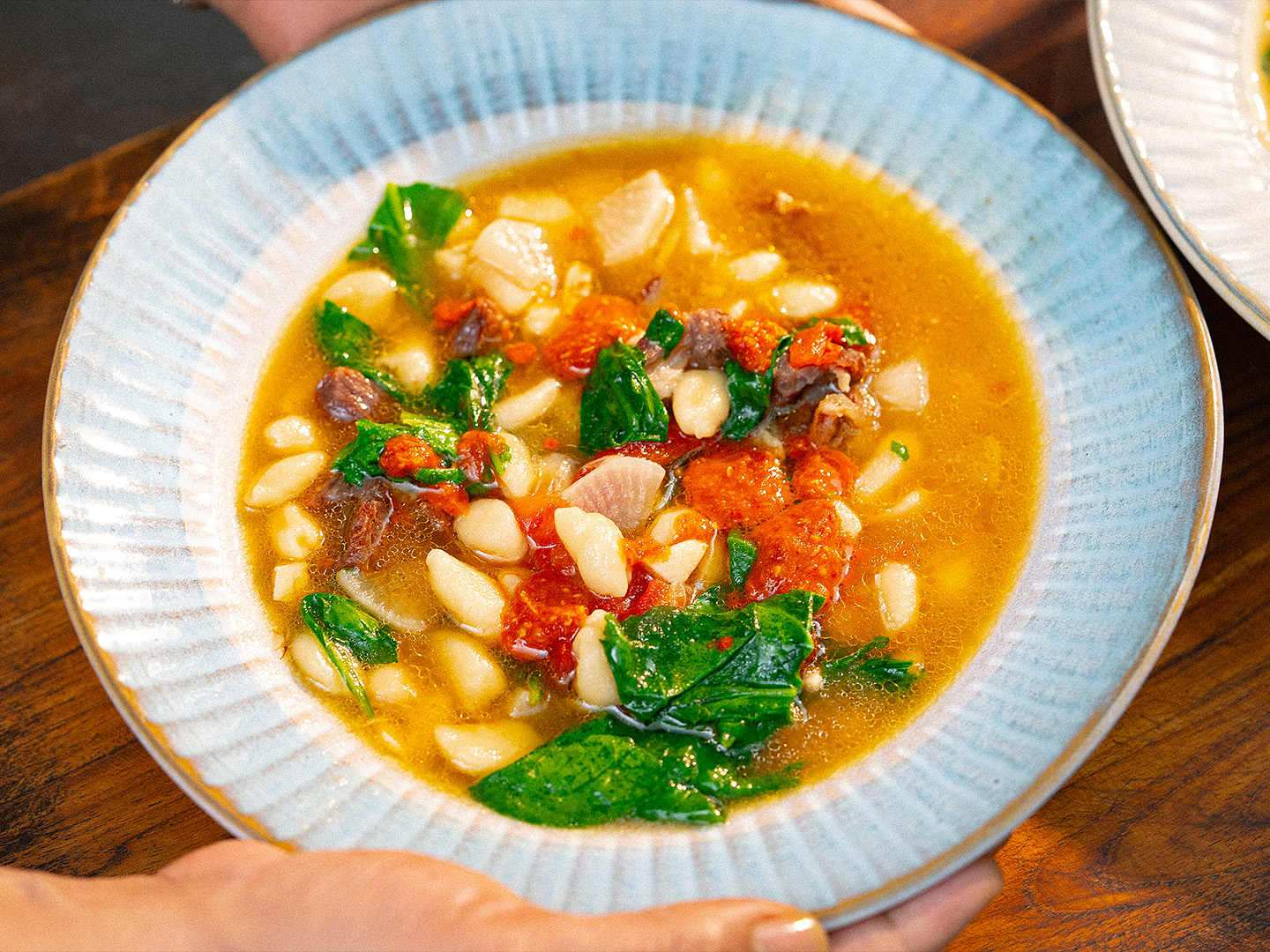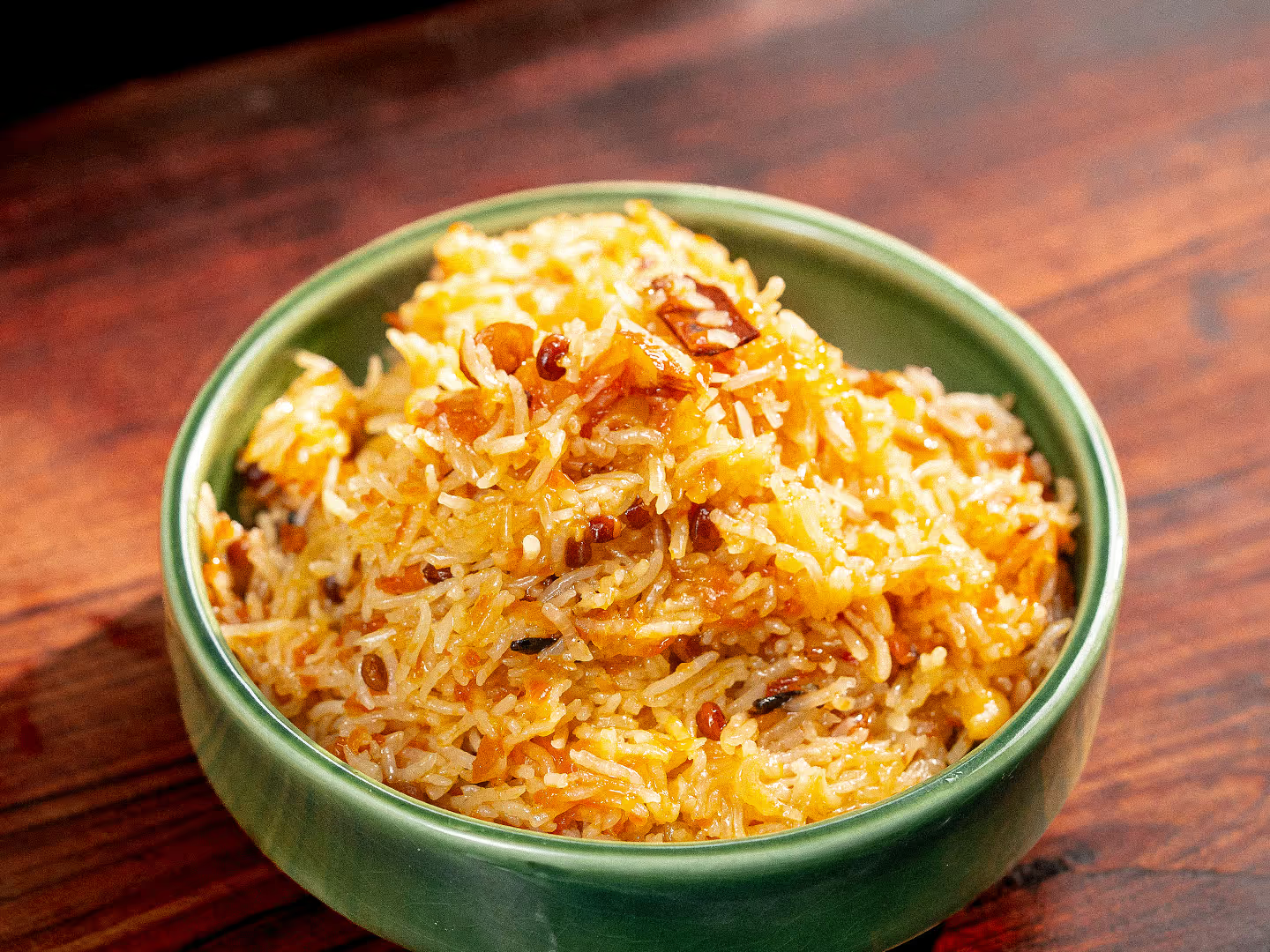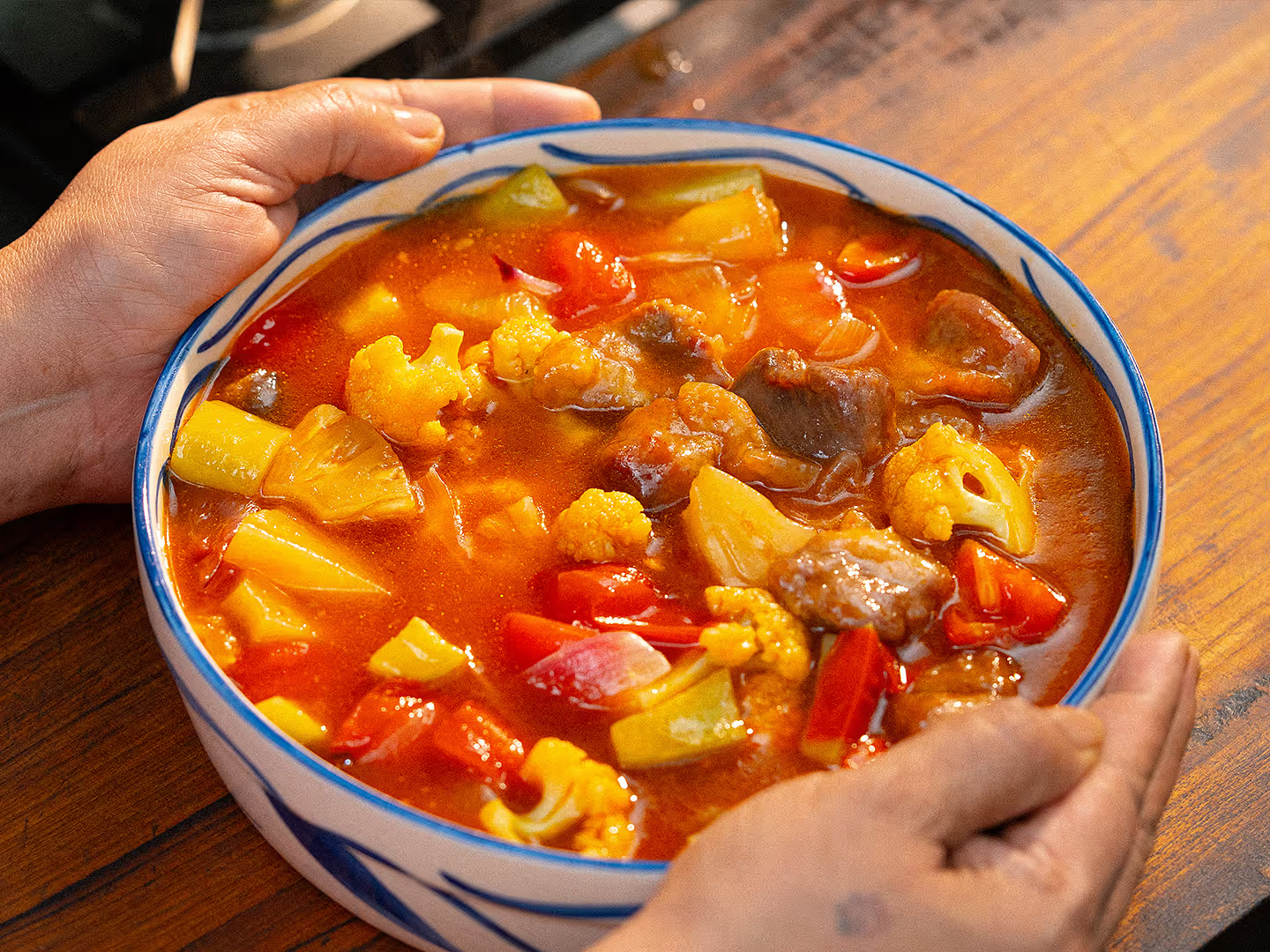Garur Dal
- Cooking time2 hours
- Calories162kcal
Garur dal is in many ways an embodiment of the spirit of Bengali cooking—eating seasonally and eating every part of the plant or animal. This dal is so seasonal that you can only find its ingredients in the Bengal markets for exactly a week of the year, sometimes even less. Garur dal is cooked on the last day of the Bengali month of Ashwin, marking the end of the Sharat season. It is eaten the next day, on the first day of the month of Kartik, the beginning of the Hemanta season.
Garur dal is essentially a dal cooked with a medley of vegetables, a common cooking format for dals in Bengal. It uses summer vegetables that are about to go out of season, with some vegetables such as water lily stalks, green/unripe tamarind, and water lily rhizome which are only available during this period, and some winter vegetables that are just coming into season—a combination so unique that you cannot cook this outside this particular period of the year.
This is our family recipe, but every family has a particular combination of vegetables that they use. Here are some commonly used vegetables:
The water lily rhizome, which is also called garu or shalu/shaluk, has to be foraged from under the water. It is only during this time after the monsoons, that the water level is low enough to easily collect the shaluk.
The lentil used for this dal is motor dal (split yellow pea) although another lentil called khesharir dal (split Indian pea) used to be the preferred lentil until its sale was banned in India because of health reasons.
The basic cooking method is to first boil the dal until partially cooked, then add the vegetables until done. No oil is added upto this stage. After everything is cooked, some families (like ours) temper the dal with whole spices, but many don't. Instead they finish with a dry-roasted bhaja moshla.
Frequently Asked Questions
Books in this recipe
Ingredients
- 200 g motor dal (split yellow peas)
- 15 g salt
- 1 L water
- 120 g kumro (pumpkin)
- 100g chalkumro (ash gourd)
- 100 g shalu (rhizome of the water lily plant)
- 100 g mishti alu (sweet potato)
- 100 g thor (banana stem)
- 100 g gathi kochu (taro corn)
- 75 g shapla stalk (water lily stem)
- 1 whole kacha tetul (green, unripe tamarind)
- 4 pcs green chillies
- 25 g grated coconut
- 30 g sugar
- ½ tsp turmeric
- 15 g mustard oil
- 3 pcs dried red chillies
- 2 pcs bay leaves
- ½ tsp kaalo jeere (nigella seeds)
- 15 g ghee
Method
- Soak the motor dal in water for at least 2 hours. Boil it in an open pot or a pressure cooker with 15 g salt and 1 L water until 80% cooked.
- Meanwhile, prep the vegetables. Cut kumro in 3-cm cubes, chalkumro in 4-cm cubes, gathi kochu in 3-cm chunks, mishti alu in 3-cm chunks, and shalu in 3-cm chunks. Peel and cut thor in 3-mm thick slices, removing fibres between each slice. Peel and chop the shapla stalks in 3-cm segments, and coat them with a pinch of salt. Slit the green chillies.
- In a saucepan, boil gathi kochu for about 6 minutes and strain the water. This removed its sliminess.
- Once the dal is 80% done, add the harder vegetables first: kumro, chalkumro, mishti alu and shalu. Give these a 10-minute headstart, before adding the boiled gathi kochu and thor. Boil for 5 mins or so, before finally adding the softest vegetables: kacha tetul and shapla. Boil for 2 mins or until all the vegetables are cooked.
- Add 2 slit green chillies, grated coconut, sugar, and turmeric to the dal, and stir them in.
- In a separate pan, heat mustard. Temper with dried red chillies, bay leaves, kaalo jeere and 2 green chillies.
- Add the tempering into the dal.
- Finish with a generous amount of ghee.































